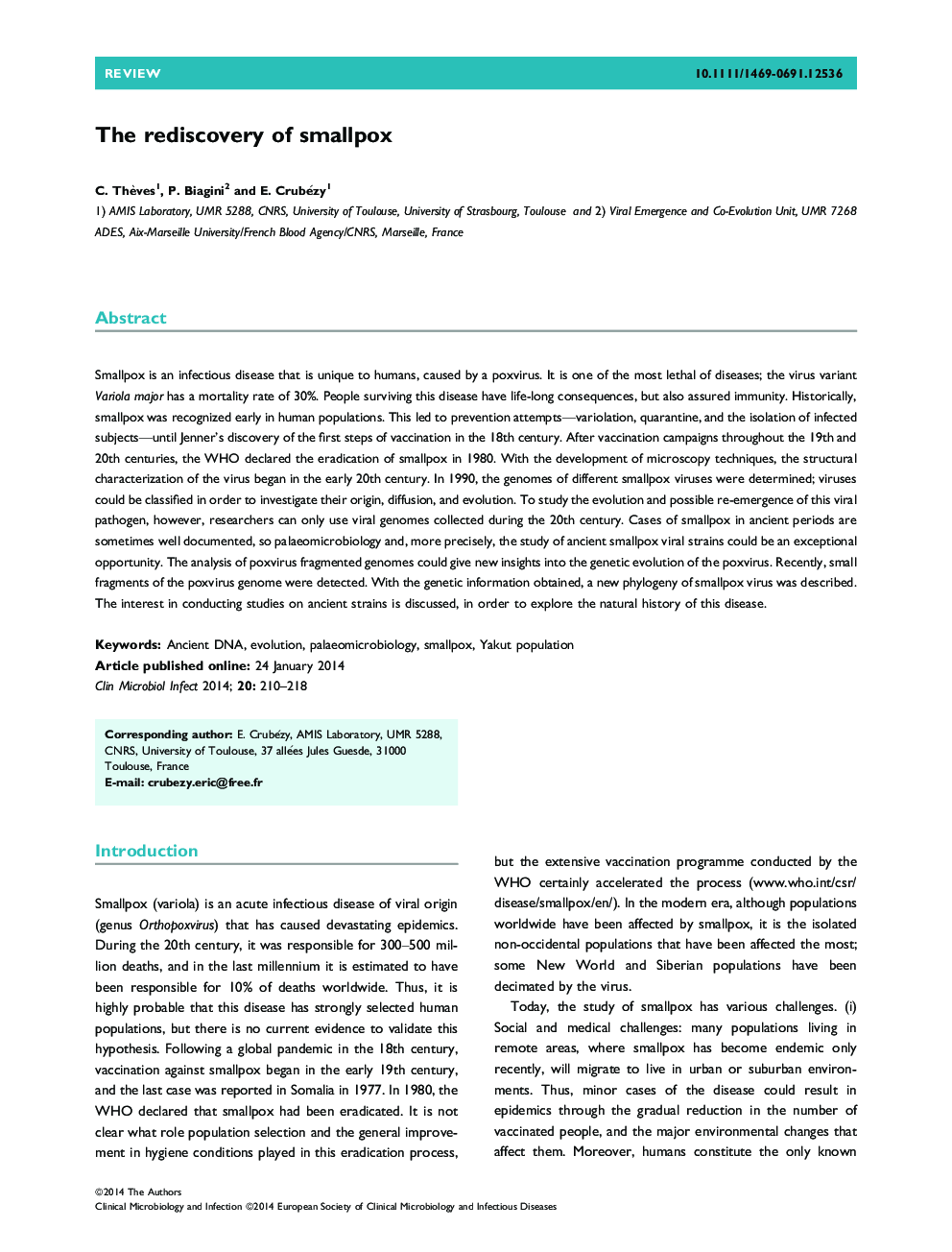| کد مقاله | کد نشریه | سال انتشار | مقاله انگلیسی | نسخه تمام متن |
|---|---|---|---|---|
| 6130458 | 1222174 | 2014 | 9 صفحه PDF | دانلود رایگان |
عنوان انگلیسی مقاله ISI
The rediscovery of smallpox
ترجمه فارسی عنوان
تازه کشف حشره
دانلود مقاله + سفارش ترجمه
دانلود مقاله ISI انگلیسی
رایگان برای ایرانیان
کلمات کلیدی
موضوعات مرتبط
علوم زیستی و بیوفناوری
ایمنی شناسی و میکروب شناسی
میکروب شناسی
چکیده انگلیسی
Smallpox is an infectious disease that is unique to humans, caused by a poxvirus. It is one of the most lethal of diseases; the virus variant Variola major has a mortality rate of 30%. People surviving this disease have life-long consequences, but also assured immunity. Historically, smallpox was recognized early in human populations. This led to prevention attempts-variolation, quarantine, and the isolation of infected subjects-until Jenner's discovery of the first steps of vaccination in the 18th century. After vaccination campaigns throughout the 19th and 20th centuries, the WHO declared the eradication of smallpox in 1980. With the development of microscopy techniques, the structural characterization of the virus began in the early 20th century. In 1990, the genomes of different smallpox viruses were determined; viruses could be classified in order to investigate their origin, diffusion, and evolution. To study the evolution and possible re-emergence of this viral pathogen, however, researchers can only use viral genomes collected during the 20th century. Cases of smallpox in ancient periods are sometimes well documented, so palaeomicrobiology and, more precisely, the study of ancient smallpox viral strains could be an exceptional opportunity. The analysis of poxvirus fragmented genomes could give new insights into the genetic evolution of the poxvirus. Recently, small fragments of the poxvirus genome were detected. With the genetic information obtained, a new phylogeny of smallpox virus was described. The interest in conducting studies on ancient strains is discussed, in order to explore the natural history of this disease.
ناشر
Database: Elsevier - ScienceDirect (ساینس دایرکت)
Journal: Clinical Microbiology and Infection - Volume 20, Issue 3, March 2014, Pages 210-218
Journal: Clinical Microbiology and Infection - Volume 20, Issue 3, March 2014, Pages 210-218
نویسندگان
C. Thèves, P. Biagini, E. Crubézy,
